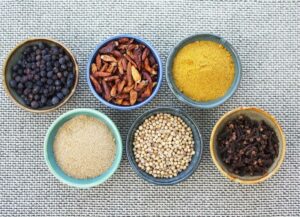Alvaro Garcia
Dairy production can be improved by increasing feed intake without negatively affecting animal health and well-being. This requires a thorough understanding of intake mechanisms and rumen health. In intensive production systems the right balance between fermentable (starch and sugars) and fibrous carbohydrates (effective fiber) is critical to maintain a healthy rumen. When this balance is altered not also rumen fermentation is modified, but also the motility of the pre-stomachs. This can result in higher incidence of acidosis and displaced abomasum, among other metabolic problems.
Cows during transition and in early lactation are prone to these health challenges. The negative energy balance makes them avid for energy dense feeds which may exacerbate this issue. Feeding TMRs can help reduce this provided the diet has adequate particle size, and there is minimal feed sorting. This can be challenging however, when the so-called “Kempen system” is used, where the diet is fed in the form of a compound feed and hay offered free choice. In a very recent experiment (Rahim et al., 2020) feeding behavior and rumen function were altered by adding aroma to hay and varying the level of starch and fiber in the compounded feed.
Holstein cows were fed compounded feed plus grass hay free choice. There were two types of compounded feed, one with high starch and one with high fiber. Within each two types of grass hay was offered free choice: untreated and aroma treated. The aroma product used was a flavor aiming to mimic the sensory properties of highly palatable hay. The artificial aroma was diluted at a rate of 80 g of additive per liter of water and evenly sprayed over the hay once a day (54 g of solution per kg of fresh hay).
Total visits to feeders per day, visits to the grass hay feeder, visits to the compound feed feeder and compound feed eating time were greater in cows fed treated grass hay. Meal frequency, meal size and meal duration were not unaffected by treatments. Cows fed compounded feed with high fiber had greater milk fat, milk urea content and greater milk fat yield. Cows fed aroma treated hay had greater milk lactose content and lactose yield, and milk urea content. These cows had also smaller rumen molar proportions of acetic acid and greater molar proportions of propionic acid compared with the untreated hay.
In conclusion, treatment of grass hay with artificial aroma increased compounded feed intake and total dry matter intake but did not affect hay intake. Additionally, treated grass hay increased the frequency of visits to both feeders. Type of compounded feed did not affect meal patterns, ruminal pH, nor fermentation profiles.
Reference
Abd Rahim, H. van Laar, J. Dijkstra, A. Navarro-Villa, R. Fowers, W. H. Hendriks, W. F. Pellikaan, F. Leen, and J. Martín-Tereso. 2020. Effects of an artificial hay aroma and compound feed formulation on feed intake pattern, rumen function and milk production in lactating dairy cows. Animal. 14:529–537.
© 2020 Dairy Knowledge Center. All Rights Reserved.










